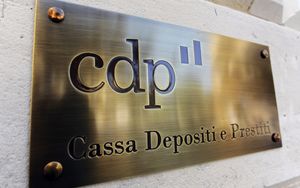(Finance) – Foreigners are driving the recovery of the tourism sector in Italy. This is demonstrated by the balance of the summer just ended which confirmed a phenomenon that has been ongoing for at least two decades: since 2003 foreign presences in the summer months have grown by 54%, offsetting the national ones, which fell by 7%. This is what the brief from Cassa Depositi e Prestiti (CDP) analysts on the Italian tourism sector, strategic sector for the country’s economy and which appears to be among the five least polluting in the European Union. The increase in global tourist flows expected over the next decade could apply to Italy for up to approximately 30 million more arrivalshighlights the in-depth analysis entitled “The tourism recovery in Italy: what future after the summer?”. Major events such as the 2025 Jubilee, the 2026 Olympics in Milan Cortina, and the possible Expo 2030 in Rome could be the main catalysts.
The country – explains CDP – has the potential to intercept the growth of international tourism. Looking at the estimates, the months between June and August this year achieved a new record, with over 100 million foreign visitors, while for Italians there was an orientation towards less expensive foreign destinations, which led to a figure below expectations for the domestic component of tourist movements.
The analysis indicates three trends that are emerging globally and which the tourism sector will be called upon to deal with in the next decade: the flows will come above all from Asia, where the growth of the middle class will be more marked, and will be characterized by a growing search for unique experiences, preferably luxury ones; the holiday will be even more sustainable and digitalised, pushing operators to compete on green services and offers which, using technology, can be increasingly personalized;
destinations that are less common today will be more appreciated, with the impacts of global warming having a growing influence on destination choices.
Already today, Italy – the report highlights – boasts a little-known strength in terms of sustainability: in fact, Italian tourism is among the five least polluting in the European Union thanks to the high incidence of renewables on the total energy consumption of hotels. But to remain competitive, maximizing the potential offered to foreign visitors, the document indicates a mix of interventions aimed at directing the sector towards: a growing industrialization of its operators, also through greater use of risk capital and more flexible hotel management models , so as to reduce the fragmentation of the accommodation offer and encourage the creation of national champions; a shortening of the gap between job supply and demand, leveraging improved training programmes, a greater number of schools dedicated to hospitality and refresher and strengthening courses for operators in the sector; a valorization of secondary locations and less seasonal forms of tourism, attractive not only in a limited period of the year, such as cycle tourism, non-ski mountain tourism, spa and food and wine tourism.
